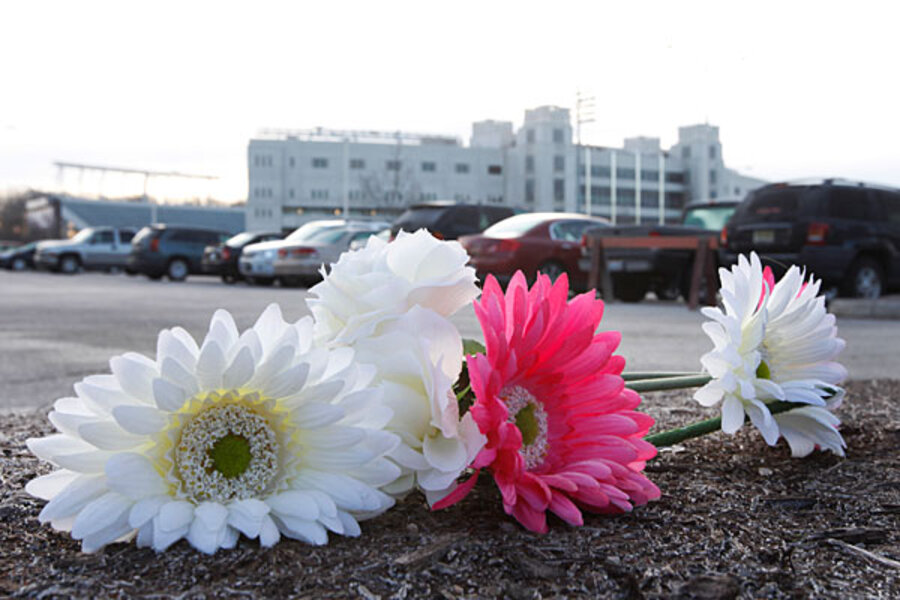Virginia Tech shooting: how university helped avoid another massacre
Loading...
Two shooting deaths at Virginia Tech Thursday are bringing attention to changes on university campuses since 2007, when 33 people died in a massacre on the same campus.
Police say a man killed a campus police officer and then fled on foot early afternoon Thursday. The same gun that killed the officer killed someone whose body was found less than a mile from the first shooting, police add. They suspect the second victim was the shooter himself, who committed suicide, and are withholding his name pending further investigation.
Virginia Tech’s response in alerting the university community is much more swift than it was in April 2007, the day a student opened fire on his peers, killing 32 and then himself. In 2007, the university did not send out an alert until two hours after the first shots were fired. On Thursday, the response time was only seven minutes.
“It was a rapid and effective response to the incident itself," says Christopher Blake, associate director of the International Association of Campus Law Enforcement Association in West Hartford, Conn. "There seems to be a very effective effort to keep the community informed.”
New technology was a primary reason for the more effective response, says Larry Hincker, associate vice president for university relations. A communications system installed after the 2007 shootings enabled the dispatcher to trigger a single alert, which could be transmitted to personal and public media throughout the campus. At the push of a button, the alerts went out as text messages, Twitter updates, e-mails, and notices flashing across 5,000 digital message boards across campus.
About 35 people in the university, including senior officials and police dispatchers, have access to the technology. The message can be adapted to a range of emergencies, such as tornadoes or explosions.
Universities recognized their need for technology that operates across a variety of media platforms simultaneously after 2007, Mr. Blake says. “Some students don’t even use e-mail, they text.... They’re very mobile, they use mobile technology, so there has to be a mix of communication,” he says.
Though the alleged gunman Thursday was not a student, universities also have been more vigilant about reaching out to students who appear troubled, says Chuck Williams, director of the Center for the Prevention of School-Aged Violence at Drexel University in Philadelphia.
When prevention efforts look at troubled behavior as a public health issue and not a criminal one, it can produce positive results. For example, in August, a teenager in Tampa, Fla., was caught with bomb-making materials at his home. A manifesto suggested he was planning to kill two school officials and 30 students on the first day of high school. Police said they were led to the teenager through others who recognized disturbances in his behavior.
“When we hear more stories about thwarted attacks, we know we are getting somewhere,” Mr. Williams says.





